Gallery – Photos from Croatia and Slovenia
{click on any image to see the full size version}
The website of Rene Navarro
{click on any image to see the full size version}
Hello,
Several years ago, I read “Journey to the West,” the Chinese epic about the monkey Sun Wukong and Tripitaka, the Buddhist monk. It is in four volumes. Now I am reading “Xuan Zang: A Buddhist Pilgrim on the Silk Road” by Sally Hovey Wiggins. Xuan Zang was the Buddhist monk who traveled to India in the 7th century CE to gather scriptures. It was a long journey through mountains, deserts, many kingdoms and tribes. He met kings, robbers, nomads, monks, spirits. I was reminded of the book “Ultimate Journey: Retracing the Path of an Ancient Buddhist Monk Who Crossed Asia in Search of Enlightenment” by Richard Bernstein. The book is still available at the Buddhism and religion section in the basement of Strand Books on 12th and Broadway in NYC. I wrote a review of it a decade ago that was never published anywhere. I am printing it here for the first time. There are a few photos from Xian that accompany the piece.
There are also a few more photos from Angkor Wat that I haven’t included before.
There’s a poem “Return” that is published here for the first time. It is from a collection of China poems. I wrote it in London.
I am traveling to the Philippines again on February 14. I won’t be back until March 7. It is mainly for a medical mission to Palawan, one of the islands in southern Philippines. But I am also teaching a seminar on Zhan Zhuang and Tai chi chuan DaoRen to be sponsored by INAM-ATRC, an NGO that has organized many of my seminars since 1998. The seminar scheduled for March 5 and 6 is a fund-raising for their indigent project. Look at my website for further announcements.
In my first medical mission in the island of Romblon, organized for western physicians 5 years ago, I did a few acupuncture treatments and taught the 6 Healing Sounds. The organizers did not really know what to do with me because they had not had any experience with acupuncture before. One treatment I did involved a man who could hardly walk without being supported by somebody. I did a Kiiko Matsumoto treatment on his leg and qigong on his spine. The medical mission involved surgeries under rather spartan conditions. A funny thing was that after a boy was circumcised, it looked like he told everybody else on the island and the very next day more than 100 boys showed up. The doctors did not know how to handle the situation partly because there were so many kids waiting but also because there were more important cases on the list. The doctors met for an urgent conference. One problem they talked about was what kind of circumcision was to be done? I told them that the prevailing technique in the Philippines was the dorsal cut, a very easy, quick procedure done with a razor blade by the local traditional native healer that won’t take too much time.
When I was in the Philippines December 25 to January 16 I attended the wedding of my youngest brother. The wedding was held at the local church. The mass solemnized by our uncle, Archbishop Tirona, was held in the backyard of their new home surrounded by 500 ylang-ylang trees that were just beginning to bloom. During my visit, my brother Roland and his wife Victoria took me and 4 other wedding guests — 3 from Miami, Florida, and 1 from Vietnam — on day trips to different places on Luzon, the main island of my country. One place we visited was Taal Volcano, a lake within a volcano within a lake within a volcano, south of Manila. Another one was Hundred Islands (there were actually 123 of them) up north. I have a few photos from that sojourn that I would like to share with you.
Every person I met talked about it. Every TV channel I saw, every newspaper I read, featured the Super Bowl. I remembered what I read from Joseph Campbell: when the ancient men were not hunting or making war, they invented games to see who was the top man. He mentioned the research of Jane Goodall about the alpha male. I also remembered what Rene Wormser said in his book “The History of Law,” a text in law school back in the early 60s: the supreme high mass of western civilization was the criminal trial. Imagine the power and resources of the state against the accused. It came from the British tradition: her or his majesty against one person on the premise that the crime is a breach of the peace in the realm even if the accused injured or killed only one person. It’s possibly just me, but looking at the Super Bowl, I realized that nowadays it is arguably the Super Bowl that is the supreme high mass of the west. With all the fanfare and hoopla, the celebrities, the expense and the festivities surrounding it, there is really nothing that compares to it anywhere, I don’t think. It is like a high sacred ritual, except that instead of the wine and bread, they have beer and chicken wings, instead of the chanting and recitatives, they have Alicia Keys, Beyonce and her dancers. Instead of the judge or the priest presiding, there is the referee. Of course, there are still the remnants of the ancient game – the contest is to determine who is the alpha male, the top man on the totem pole. I must confess that I saw the start of the game, parts of the half-time show, and then fell asleep.
All the best in the New Year,
Rene
Hello,
Please pass the word. I am going to teach a 2-day seminar on March 5 and 6, from 10 am – 6 pm, at the Claret School in Diliman. The
seminar is sponsored by INAM-ATRC, an NGO that has organized many of my workshops since 1998. The seminar is a fund-raiser
for INAM’S indigent project. The flyer is here.
The seminar will focus on Zhan Zhuang/Foundations (breathing, basic postures and stances) and Tai chi chuan DaoRen (a short form that includes
the 4 core movements). I am hoping that through these seminars, we’ll be able to develop practitioners who could teach the form, especially
to those who need it most — children, seniors and people who need a healthy discipline or a regimen that would facilitate a transition from a
colonial structure that we have inherited and perpetuated. Zhan Zhuang and Tai chi chuan DaoRen are important complementary healing arts to acupuncture, massage and meditation.
Here are the contact details for the seminar:
Contact person: Annie Sollestre
INAM Office PHONE: 9263356
CP – smart -09189592207
Mobile extension line – PLDT : 6686687 (for this number kindly text first so that i will
INAM’s Address: 82 A Malakas St., Quezon City
Here is my complete itinerary:
February 15: arrive in Manila, check in at AIM near Greenbelt
February 16: check out of AIM after lunch.
February 16: Drive to Tarlac City in the evening. Check in at Maja Rica Hotel, MacArthur Highway and Hilario Street.
February 21: check out of Maja Rica for Manila
February 21: stay in condo of relative.
February 23: Palawan/Coron for medical mission and touristing.
March 4/Manila. Check in at Dusit Hotel
March 5 – 6: Zhan Zhuang nd Tai chi chuan DaoRen seminar
You can get in touch with me through my brother Flor. Here are his phone numbers:
0918 – 945 – 6993
0917 – 522 – 3008
Best,
Rene
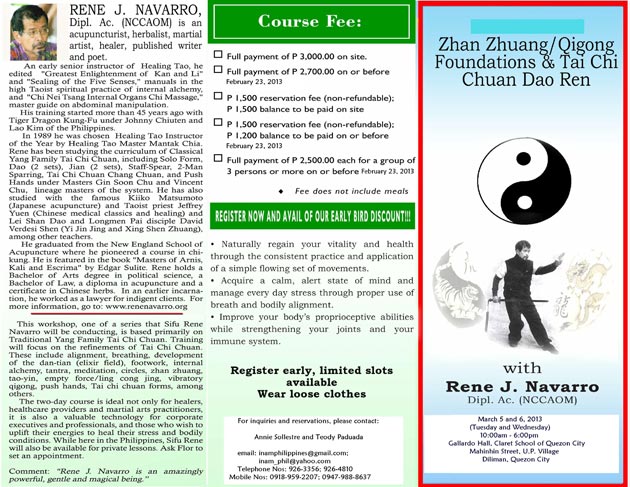
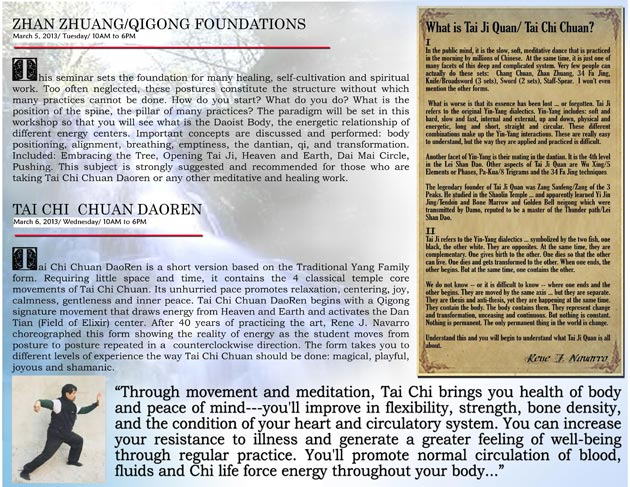
December 21, 3 AM, Foothills of the Appalachian, PA
There are a legion of distractions pulling us one way or another, often different influences/temptations bombarding our senses, that we fail to listen to what is authentic and what is essential. To me, it is important to listen deep, in stillness. Since it is the year of the Water Dragon, the darkness offers the wisdom that we can listen to. The organ at this time in the season is the Kidneys. Their sense openings are the ears … they connect us to the external and internal worlds. While we can listen to the outside world, we can also listen to the internal. Water stands for flexibility and softness and deep wisdom.
One of my father’s favorite words was “meretricious.” It means something — an object, phenomenon, a person, a goal, status or event — that is attractive, sensational and seductive. Something that can turn our heads and make us lose sight of and forget what is truly valuable and genuine. Something that can also make us lose our anchor to our deeper Self, the spiritual and eternal, the flame that burns in our Heart. The Siren Song that pulls us away from our life and destiny.
I have often gone back to the ancient classics of Daoism. I have read them carefully — drank of their wisdom elixir. Simple words but deep and meaningful. Here are three passages — two from the Dao De Jing and one from Zhuangzi.
The masters of this ancient path
are mysterious and profound
Their inner state baffles all inquiry
Their depths go beyond all knowing
Thus, despite every effort,
we can only tell of their outer signs –
Deliberate, as if treading over the stones of a winter brook
Watchful, as if meeting danger on all sides
Reverent, as if meeting an honored guest
Selfless, like a melting block of ice
Pure, like uncarved wood
Accepting, like an open valley
Through the course of nature
muddy water becomes clear
Through the unfolding of life
man reaches perfection
Through sustained activity
that supreme rest is finally found
Those who have the Tao want nothing else
Though seemingly empty
they are ever full
Though seemingly old
they are beyond the reach of birth and death
Chapter 15, Tao Te Ching: The Definitive Edition by Jonathan Star
It mentions virtues that the ancient sages cultivated and how these virtues were applied to certain situations. The passage is actually an affirmation that we can read and memorize. In studying it, we should allow its message to emerge from the waters like a lotus.
At the center of our meditation is stillness. Beyond movement and contemplation, beyond theories and practices, is the subtle and elusive concept of stillness. Since humans are possessed of a Monkey Mind, it is difficult to arrive at stillness, that place of nothingness/ emptiness that no concepts, ideas, ambitions, dreams, achievements, pursuits can reach. It is where we finally find our … Self.
Chapter 16, Dao De Jing: Definitive Edition by Jonathan Star
Become totally empty
Quiet the restlessness of the mind
Only then will you witness everything
unfolding from emptiness
See all things flourish and dance
in endless variation
And once again merge back into perfect emptiness –
Their true repose
Their true nature
Emerging, flourishing, dissolving back again
This is the eternal process of return
To know this process brings enlightenment
To miss this process brings disaster
Be still
Stillness reveals the secrets of eternity
Eternity embraces the all-possible
The all-possible leads to a vision of oneness
A vision of oneness brings about universal love
Universal love supports the great truth of Nature
The great truth of Nature is Tao
Whoever knows this truth lives forever
The body may perish, deeds may be forgotten
But he who has Tao has all eternity
Zhuangzi, Chapter 4. Fasting of the Heart/Xin (modified from Essential Zhuangzi by Hamill and Seaton)
… Yen Hui said, “May I ask what method you’d employ?”
“Fast,” Confucius said, “and then I’ll tell you. But having the method is one thing, carrying it out is another. Will it be easy? Whoever thinks it might be easy is not suited to the job.”
“My family is poor,” Yen Hui said. “I haven’t tasted either meat or wine for months. Is that what you would call fasting?”
“That’s fasting for a sacrifice,” said Confucius. “It is not the fasting of the heart.”
“What is fasting of the heart, then?”
“Set your heart on the One,” said Confucius. “Don’t listen with your ears; listen with your heart. Then stop listening with your heart and listen with your Qi. Hearing stops with the ear, the heart stops with words and symbols. The Qi is empty. Being so, it can attend to all phenomena. Dao begins to roost in emptiness The emptiness is the fasting of the heart.”
December 19, 2012. In the foothills of the Appalachian, PA.
I don’t know what you are going to do and where you’re going to be, but blessings to you and yours on this most sacred time of the year. I will be in NY City December 21, 22 and 23. I leave for the Philippines on Monday December 24.
No, the world is not going to end on December 21, notwithstanding dire and apocalyptic prophecies. Yes, there is going to be a shift in the astronomical alignment, but only to the extent that we are moving to another season (Spring and the return of the Light). No, we do not have to do anything extraordinary (like a pilgrimage to Chichen Itza in Mexico or the pyramids o Giza in f Egypt), but it’s important to be aware of the shift our own body is taking as we slowly move through the seasons. Yes, we should do a meditation to align ourselves to Nature and its transformation. So perhaps on the 21st or 22nd, we should spend an hour or so early in the morning or late at night (preferably at 11 pm to 1 am) in stillness. Since it is the year of the Water Dragon, focusing on the Kidneys and the Water Element would help re-orient us to the 5 Elements (Water, Wood, Fire, Earth and Metal). I will do my own practice. On the 22nd I will also be at Columbus Park in Chinatown at 8 am to practice Tai chi chuan. If you are interested, please feel free to come.
To me, change in the world has to start from within. Self-cultivation practices are important in human transformation. So each and everyone of us has to have a serious meditative, spiritual and/or qigong regimen. It is good to do it with others, a group or community of friends and practitioners. But often we have to do it alone. We have to work on the Heart to be able to see ha any concrete and significant effect out there. Ultimately, society is just a mirror of what happens from within.
May I share some brief notes from my journal at this time of year:
Winter Solstice is associated with the coming of the Light in many ancient cultures. In the I Ching/Book of Change, Hexagram 24, this is depicted as Return/Fu. The Yang emerging from the Darkness of the Yin.
“The Complete I Ching: The Definitive Translation” by Al Huang (Inner Traditions: 1998) says:
“Fu plays an important role in the I Ching. It is one of the twelve tidal gua used to explain the cosmology of the changing of the seasons — to go around and begin again. It represents the eleventh month of the Chinese lunar calendar, or December. According to the I Ching, ‘When Yang turns back, it is Fu.’
“At the Winter Solstice, the twenty-second day of the eleventh month, the yang energy emerges. In Northern China, people can actually feel the yang energy begin to surface at the turning point of that specific day. There is an ancient saying handed over thousands of years: ‘At winter solstice, yang begins to surge.’ This idea is vividly expressed in the structure of the gua. For this reason, during the Zhou dynasty the Chinese New Year began with the winter solstice. The yang energy starts a new cycle.” page 212.
In the Taoist meditative and health exercise of Taoyin (now called Qigong), Winter Solstice is associated with the 5th lumbar vertebra and its activation. Each of the 24 vertebrae in the spine corresponds to a day in the calendar. So a vertebra is covered once every 15 days. Chen Xiyi, a Taoist of the 10th and 11th century CE, who lived on Huashan/Flower Mountain, choreographed exercises. He said that the set for the Winter Solstice should be done between 11 pm and 3 am on the second half of the Eleventh Moon to remedy cases of cold and damp in the jingluo channels and the extremities, lumbar pain, and counterflow qi under the navel/CV8/Shenque. Master Chen is also famous as the founder of Liu He Ba Fa/6 Harmonies, 8 Methods and Sleeping and Dreaming Qigong.
“Ancient Way to Keep Fit” (Hai Feng Publications HK: 1990), page 45.
With David Verdesi (www.david verdesi.com) and other students, I visited the Basilica di San Clemente in Rome 3 times within a period of 1 month 3 years ago. We were training in Lei Shan Dao at the time. Beneath the church were the ruins of the ancient temple of Mithras. There were pillars, a fresh water spring, and most prominently a cauldron-like excavation for bull sacrifice. I did not know anything about Mithras except he was supposed to be a Persian god or prophet. A quick look at the internet showed that he preached love and compassion, had 12 disciples, died and was resurrected on the third day. He was born on December 25 about 500 to 600 years before Jesus.
Here is a passage from a book that I’ve been reading:
“One of the imported religions that was gaining a large following in Rome was the Iranian cult of Mithras. According to legend, Mithras had been sent to Earth by the Supreme God of Light to slay a bull whose blood was the source of all fertility. Only men (most of them Roman soldiers) participated in Mithraic rites. Neophytes were required to undergo baptism and to perform deeds of self-sacrifice and courage, thereby progressing through seven stages of initiation. The process was said to bring about a gradual purification of character, leading finally to the unconditioned state that the soul had known before birth. Having achieved this seventh degree, the initiate was regarded as an incarnation of the divine.
“The central event of the cult myth, the slaying of the cosmic bull, was regarded as the greatest event in the history of the world – the act of Creation at the beginning of time, and of redemption at the end. Believers reenacted the drama in a nocturnal bull sacrifice in a cave or grotto. This ceremony was seen as a celebration of the union of opposites – life and death, spring and autumn, beginning and ending. Sculptures of the bull slaying showed grains flowing from the wound in the animal’s neck.
“Mithras’s birth was supposed to have been attended by shepherds. At the end of his time on Earth, he and his disciples shared a last supper, which was later commemorated by believers in a communion of bread and wine. Furthermore the hero was said not to have died but to have returned to heaven, and his followers believed that he would come again at the end of the world. Then the dead would rise from their graves for a final judgment.
“The Mithraic holy day was Sun-day, a fact no doubt noted by Emperor Aurelian, who, with so many of his soldiers being initiated into the Iranian cult, must have wondered: Why not consolidate the worship of Mithras with that of Sol Invictus? Accordingly he declared December 25th the official birth festival not only of Sol but of Mithras as well.
“By the fourth century, a radical Jewish sect calling themselves Christians was brewing trouble for the Roman authorities. The Emperor Constantine, realizing the best way to defuse the movement might be to co-opt it, made Christianity the state religion with himself at its head. The Christians went along, though doing so entailed a few revisions to their rites and beliefs. Previously their Sabbath was Saturn-day; but for unity’s sake, Constantine changed it to Sun-day, the feast day of both Sol and Mithras. This was acceptable to Christians since, after all, Christ’s resurrection had occurred on a Sunday, the day after the Jewish Sabbath (Saturday) following the Passover.
“Moreover, within another quarter of a century or so (by the year 360, certainly) the December 25 feast-day of Sol and Mithras had become the principal Christian festival as well, the day for the commemoration of the birth of Jesus. This date met with the approval of Christians because, first of all, no one knew Jesus’s real birthday anyway; and second, the winter Solstice had always been seen as a time of renewal. It was the time of the rebirth of the Sun and of light. Therefore how fitting to use it as the day to celebrate the birth of the true spiritual light of the world! And, even though the Solstice ceased to occur on December 25 centuries ago due to calendrical inaccuracies, Christians have celebrated Christmas on this day every year since.”
“Celebrate the Solstice: Honoring the Earth’s Seasonal Rhythms through Festival and Ceremony” by Richard Heinberg (Quest Books: 1993), page 104.
I was in Mexico a few times in the mid-80s. These photos were taken at the Chichen Itsa Mayan pyramid complex. There’s the pyramid of Kukulkan, the cenote/sacrificial pool, the observatory and the leopard inside the pyramid.
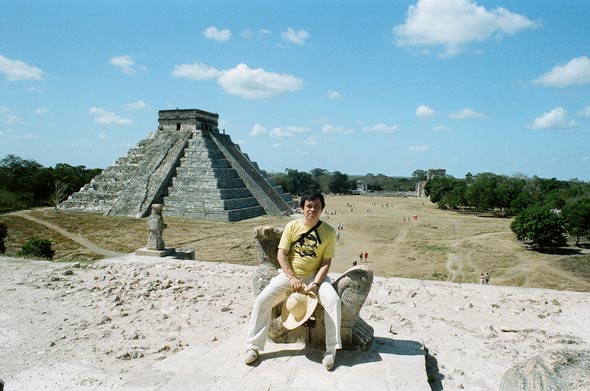
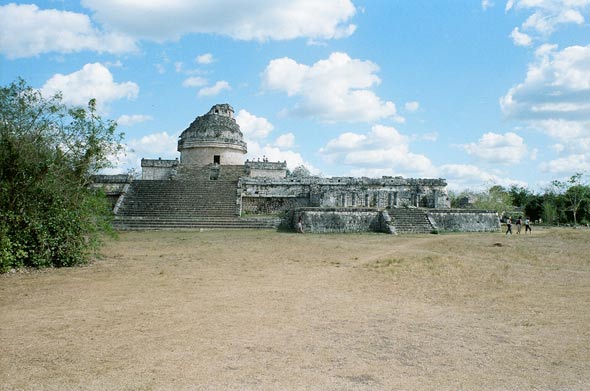
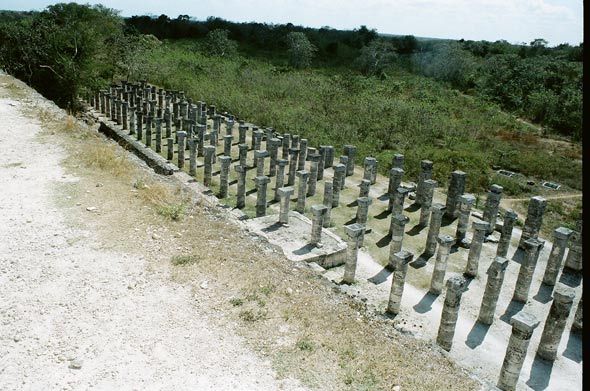
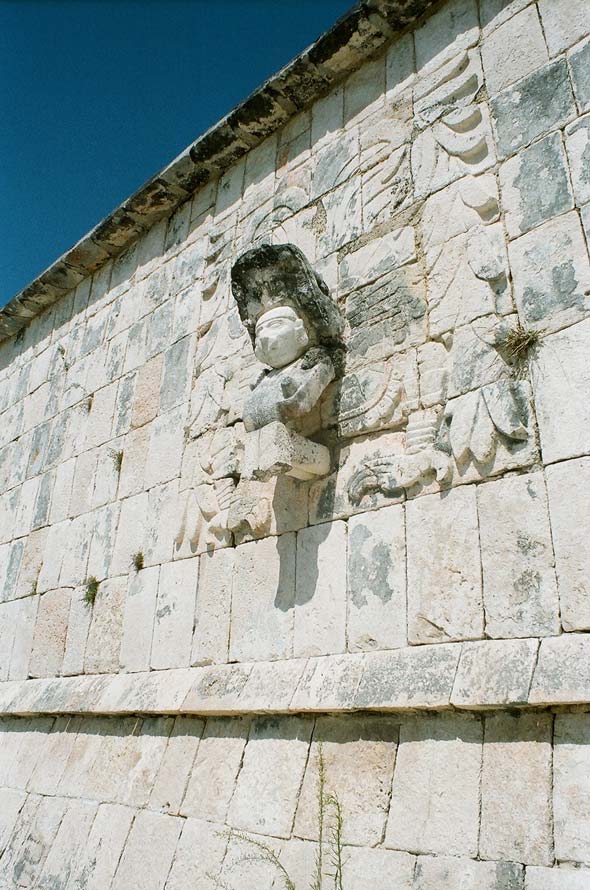
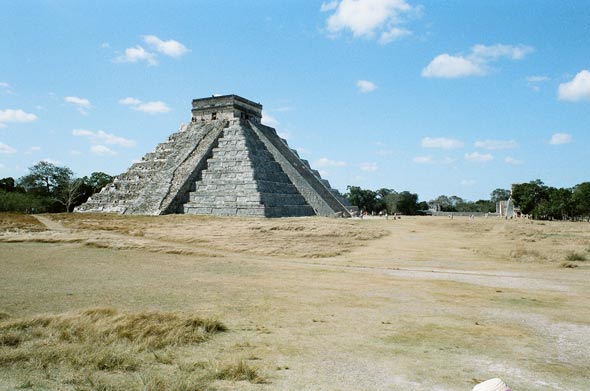
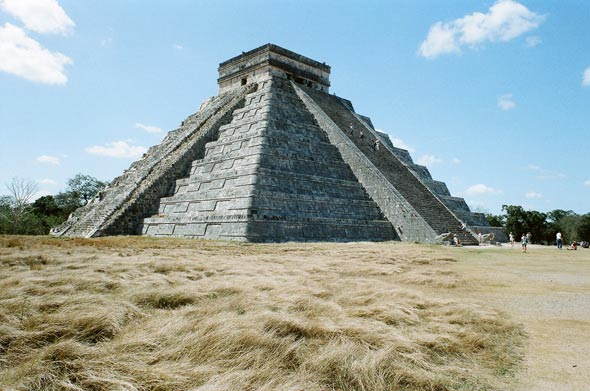
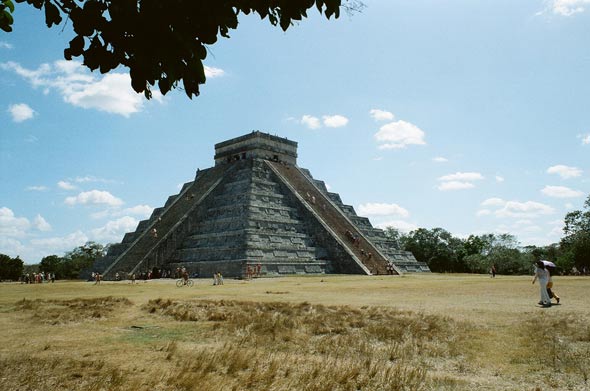
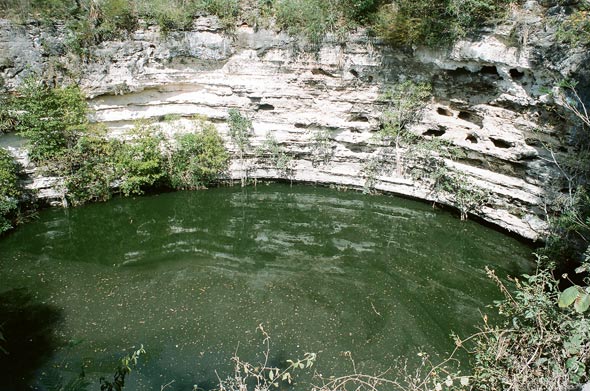
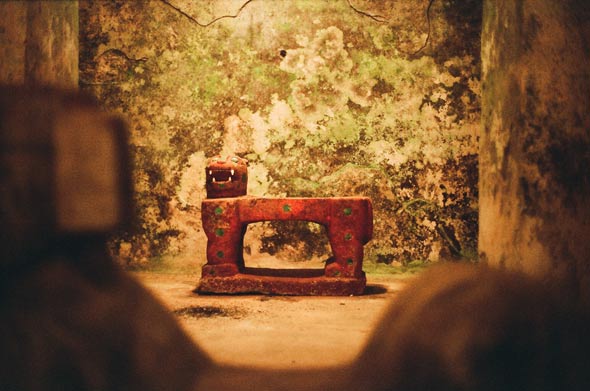
It was in the Winter of 1994 — I have to consult my diary about it — and enroute to Hawaii from the Philippines, the plane stopped over at Narita in Japan. I was with a couple of Chinese women I met in Hongkong. (Our United Airlines flight was delayed for a whole day in HK because of a terrorist report. I’ll tell you the story another time.) We had a whole day to kill, so we decided to take a train to Tokyo and walked around. We were not dressed for the cold weather. I saw this park and did Tai chi there, something I have done in many parks around the world. The women took a few photos of me. We eventually landed in Oahu, Hawaii. It turned out the Chinese women were going to spend a few days at the University of Hawaii in Manoa. I took them around the island. Another coincidence: we met again in Harvard University a week or two later. (There is no space to follow the thread, so I’ll also reserve it for later.) Perhaps, life has a lesson or two to teach us when we encounter synchronicity. Perhaps it is just happenstance — random, incomprehensible events that have no meaning?
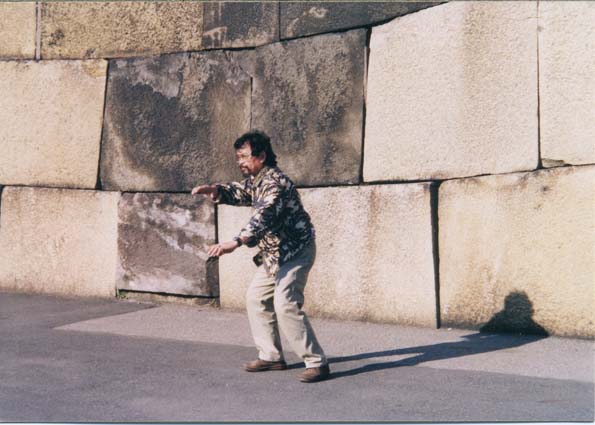
In the outskirts of Hangzhou are the tea plantations and the temples. Some of the buddhas were carved on the mountainsides. I have been to Hangzhou a few times. To me, it is the most interesting city in all of China. I spent many memorable hours doing Tai chi inside a walled garden devoted to bonsai on Xihu/West Lake. You paid for a flask of hot water and a spoonful of tea and you sit on the patio. Because there is an entrance fee, there aren’t many practitioners of Tai chi there, so you can actually have the place to yourself for hours. If you arrive early enough, there are no guards and you can come in for free. Within walking distance there’s Hefang, a street with old wooden houses. The place is a kind of mall with shops vending tea, scarves, paintings, decor, gourds, buddhas, wu-shu weapons, clothes, bags. There’s a food court on one side selling delicacies of the city — Su Dong Po pork, West Lake carp, duck bills and feet, stinky tofu. There’s also near the entrance a couple of massage centers run by the blind.
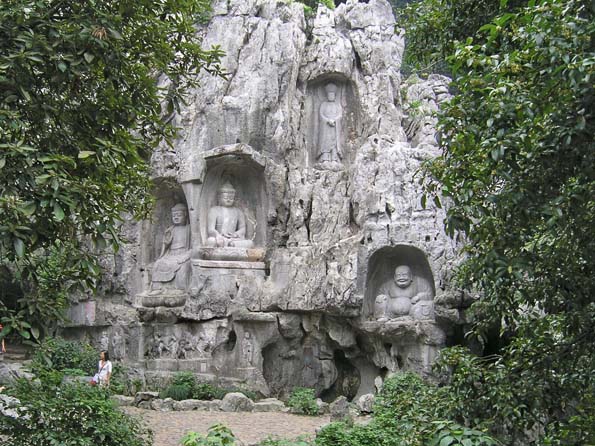
My birthday celebrated with the family at one of my favorite restaurants, the Seoul Garden, on E 32nd Street and Broadway in Manhattan. With my granddaughters Ava and Isabel. Seoul Garden has some of the best doufu in town. I’ve celebrated several of my birthdays there.
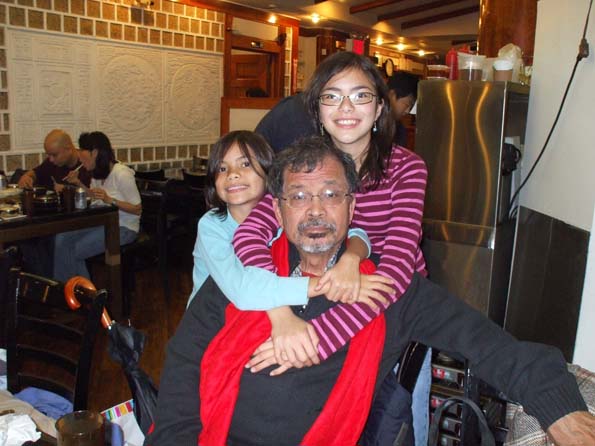
I make it a point to go to Walden Pond every time I go to Boston. I often do Tai chi in the parking lot in the summer or by the water in other seasons. The guards do not bother me; they just tell me to practice farther from the weekend traffic, especially when I have my Dao/Knife and Jian/Sword. After practice, I walk around the lake, stop by the original location of Henry David Thoreau’s cabin and light an incense or two there.
One time, in observance of Spring Equinox, on a Sunday I went to Concord and spent a couple of hours sauntering around Walden Pond, where Henry David Thoreau lived for a couple of years in his famous cabin. Sauntering: from sainte terre, now meaning a pilgrimage to a sacred place.
I have done it many times before, especially during my years studying and later teaching in acupuncture school outside of Boston. There were occasions at Walden when I practiced Tai chi chuan for hours at The Farm with my friend Debra Kang Dean, an award-winning poet and Tai chi teacher and aficionada (www.debrakangdean.com). Her late husband Bradley Dean was a respected Thoreau scholar.
I almost always end up at the original location of Thoreau’s cabin where a cairn has been built nearby. A sign was posted saying (from Walden, or A Life in the Woods):
“I went to the woods because I wished to live deliberately, to front only the essential facts of life, and see if I could not learn what it had to teach, and not, when I came to die, discover that I had not lived.”
I did repair to the store on the premises and bought a few memorabilia: a couple of items with Thoreauvian quotes:
“Surely joy is the condition of life.”
“Always you have to contend with the stupidity of men.”
“Simplify. Simplify.”
I also got some cards with the famous line:
“If a man does not keep pace with his companions, perhaps it is because he hears a different drummer.”
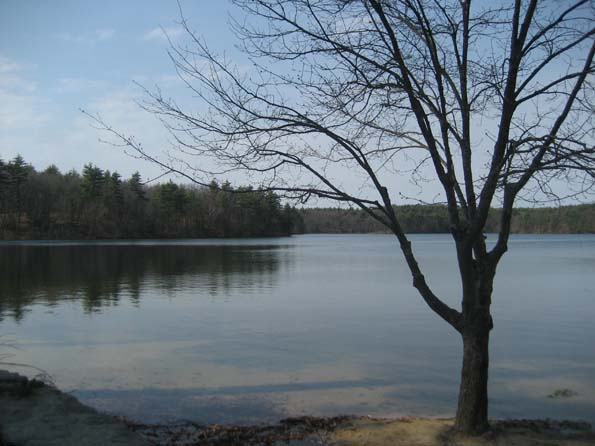
At Fengdu, the city of the dead. The cruise ship stops at different points on the trip to the 3 Gorges and the Great Dam. There were vendors peddling memorabilia, umbrellas, masks, snacks, bottled water. Inside there were statues of people undergoing punishment in the different circles of hell.
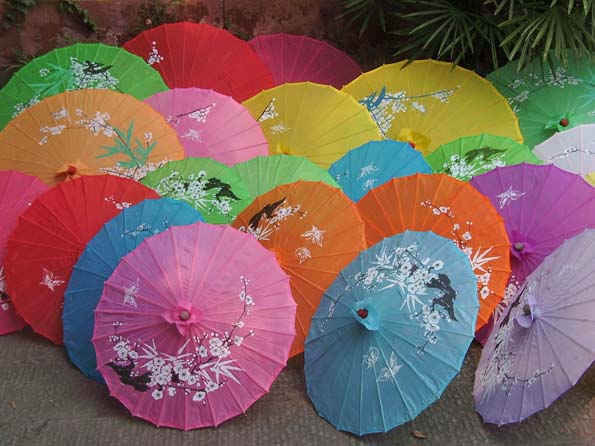
I was in Paris a long time ago. I practiced Tai chi at the Jardin de Tuileries before I went to the Louvre to see the Mona Lisa and the Winged Victory of Samothrace, two of my favorite art objects in the museum. I cannot remember now if I.M. Bei’s pyramid was already in place at the time, but somehow in my memory, it has always been there during the times I was visiting. In the photo, I posed in the White Crane posture.
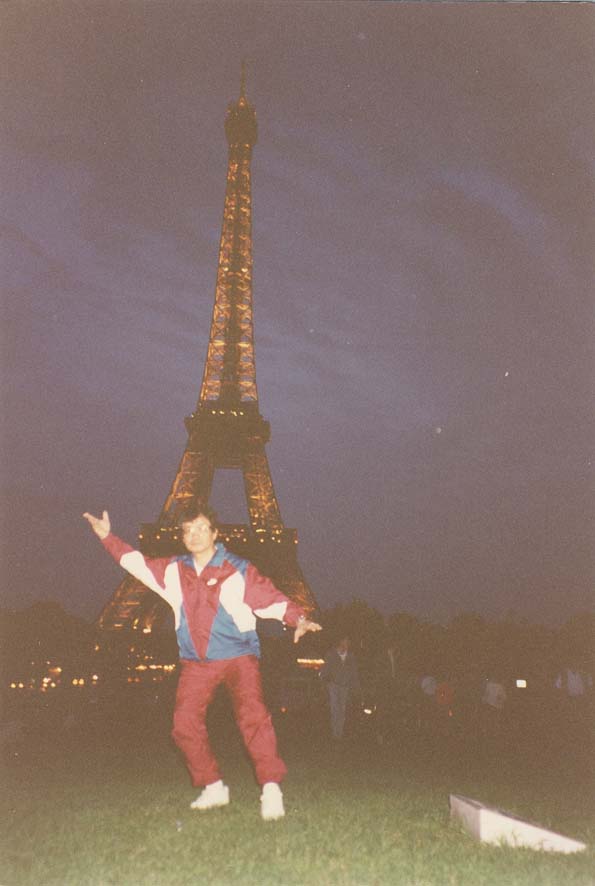
If you are at the Tao Garden, GM Mantak Chia’s first-rate resort in Doi Saket, Chiangmai, Thailand, be sure to take a walk around the village. There are temples where you can listen to the monks chanting early at dawn, a noodle shoppe run by the thoughtful and lovely Pilat, and a few arts and crafts stores. These giant tamarind trees in the photo have their own spirit house and a small chapel for pilgrims. And oh, yes, don’t miss the coconut ice cream in a private house across the creek. It is the best ice cream I have had anywhere. We often snuck up to the freezer at night and helped ourselves, always leaving the payment on the table.
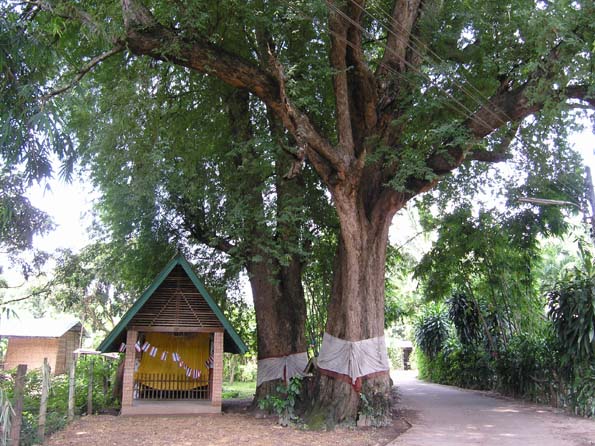
A viewing window at the Humble Administrator’s Garden in Suzhou, the Venice of the East. One time when I was visiting, there was a small ensemble playing traditional music on traditional instruments like the zheng/zither and the pipa/lute. Easy to be transported to the past in these surroundings.
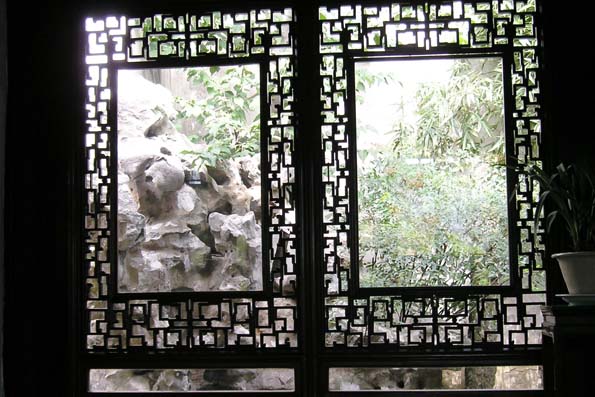
My first time in Chichen Itza, near Tulum and Cancun, was in 1984. I had been there many times in the 80s. I guess that was before the New Age people discovered the place. Nowadays, it is a center of pilgrimage for thousands during the equinoxes and solstices. One of my memories is seeing the serpent crawl down the steps. Since then, there have been much research into the different pyramids. It is amazing how much esoteric information is encoded in them.
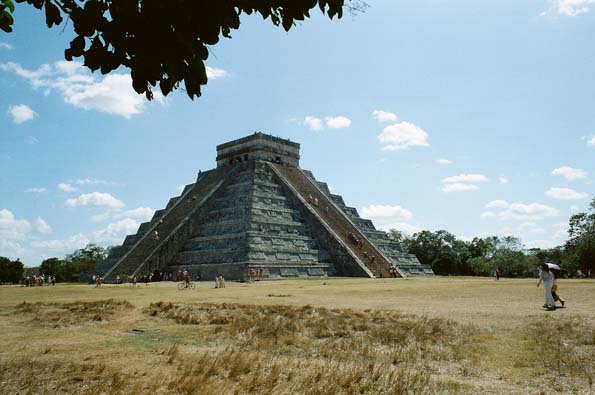
Ana and Gonca by the Bosphorus in Istanbul in 2004. They were studying Shaolin with me. I have studied with them, too, basically Xing Shen Zhuang Fa, with Gonca in Huangshan, China and Ana in Rome. Istanbul was a particularly memorable place for me since my first visit in the 90s. The restaurants, Grand Bazaar, the mosques, museums and the baths were particularly striking. I was the guest of David Verdesi. We did the baths and the restaurants. He and I tried the water pipes/hookah. I’ve done it a couple of times, but always, I choke when I puff. People asked me about it, but I did not experience anything particularly elevating.
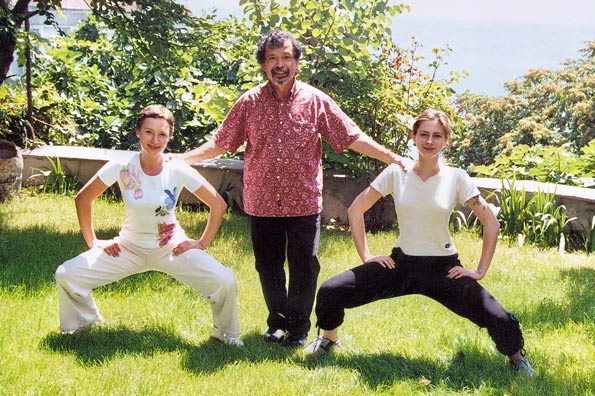
Huangshan/Yellow Mountain, has the reputation of being the most beautiful mountain in China not only for its misty peaks and unusual stone formations, but also because of its sunrise. Cindy Zhou, the English translator and tour guide, told me it was going to rain and not to bother about the sunrise that day. Just the same, I got up between 4 and 5 in the morning. I did not know flashlights were available in the hotel, so I started walking in the dark in the general direction of a peak where the sun was supposed to rise. Along the way, two women from Hongkong offered to lend me a flashlight. So the rest of the way was illuminated. We settled on a comfortable rock of our choice — in the dark — and waited. The sun did not burst through the clouds. It actually started as a sliver and slowly shed its light on the surrounding mountains. Suddenly, there were flashes from cameras followed by applause and jubilation. There must have been a hundred people waiting for the sunrise. It was a zen moment of surprise and joy. Later, we gathered in front of the hotel, some in groups, others individually, and did our morning Tai chi and qigong rituals.
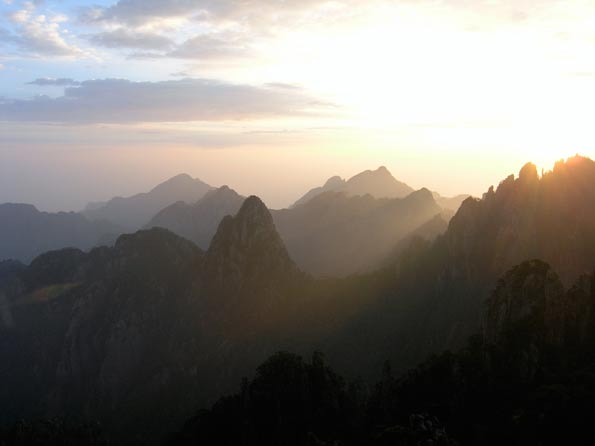
I was on a boat, the Princess, on the way to the 3 Gorges and the Great Dam. I was waiting for a good angle, the alignment of the sun, the boat, mountains, and the bridge. I do not know if they were the best shots I took. But there they are, for whatever they are worth. The pocket Samsung camera tried its best. I do not have any set rules for taking photos. Much of my aesthetic sensibility is intuitive. But there is often in my mind that “crucial moment” the zen tradition talks about. I also try to follow the Tai chi chuan adage: Stillness in movement, movement in stillness. A photograph should not be static. It should capture a scene in the context of the passage of time and space.
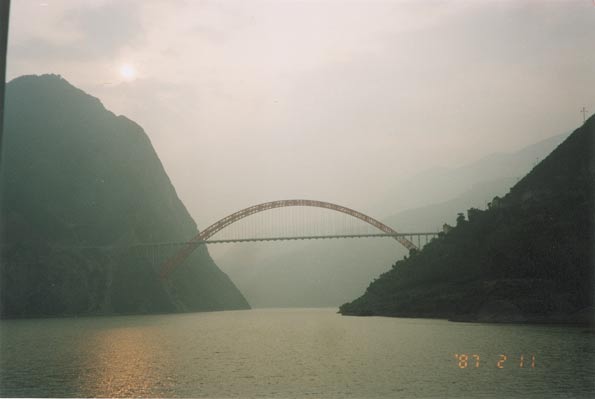
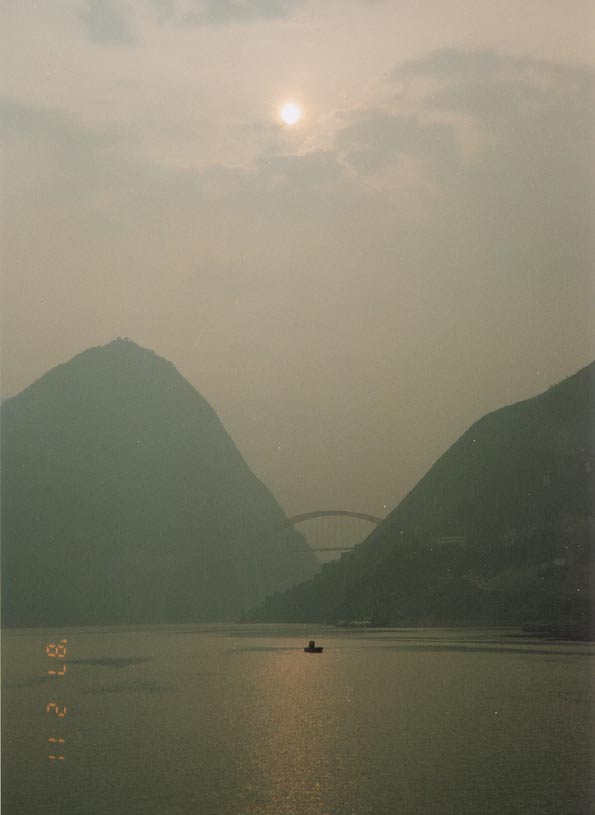
David Verdesi (www.davidverdesi.com) with his students at the Basilica di San Clemente in Rome, a Roman Catholic church built, like many churches in Italy, on the ruins of pagan sacred ground or temple. We visited 3 times during a period of one month. Once it was closed for the day. The other times we descended to the underground cave. There were some ancient columns and relics, if I remember, a spring and an excavation presumably for bull sacrifice, a ritual that may have had an association with cleansing, sacrifice and the astrological period of Taurus.
It was the site of the temple of Mithra. I did not know anything about him at the time, except that he was a Persian god or prophet.
I had an eerie feeling walking around the place — it felt like it was haunted by restless ghosts. How many of these spots were the scenes of battle? The quick information I gathered on the internet was that Mithra was born of a virgin or the sun and moon, he had 12 disciples, preached love and compassion, was called the Light of the World, died and was resurrected on the third day. Oh yes, he was born on December 25, about 500 to 600 years before Jesus. When I told a friend about it, he sent me the link to a website that says at least 25 other prophets were born on December 25, the day of the Winter Solstice that announces the coming of the Light. (I Ching, Heagram 24/Fu/The Return of the Light.) Another occasion that is related to astrological phenomenon.
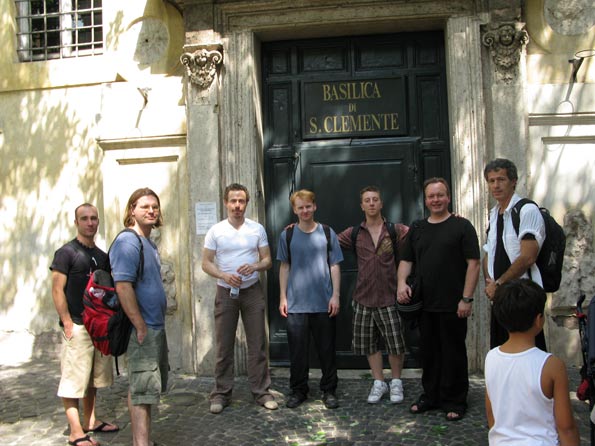
The waterfalls in Banahaw in 1986, my first pilgrimage to the holy mountain. My old college friend Isis took me and a couple of her friends there for a weekend retreat. It was part of the ritual of cleansing, dipping in the cold water of the river at Santa Lucia and showering in the waterfall before you went up to light a candle at the different grottoes on the mountain. A shaman told me that that some things and places are inherently sacred, others are sacred because we venerate them. Almost every time I visited the Philippines I went to Banahaw. Last September (2012) I could not make it. I was informed by my students in Chi Nei Tsang that Banahaw was dirty, with people dumping their garbage in the river and playing loud karioke music.
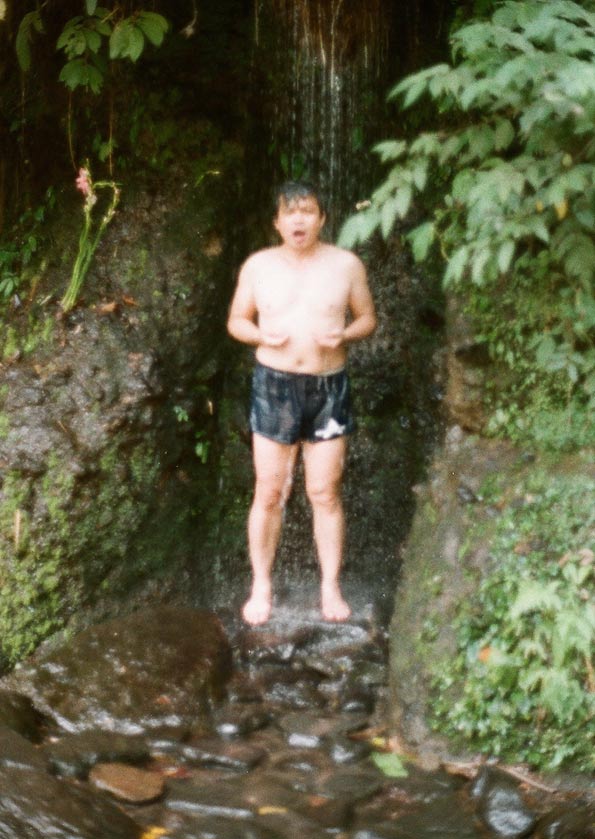
I used to do Tai chi chuan on the beach before sunrise in Cyprus. At one time there was Jupiter and Venus in the sky. In the dark, there were shadows, and voices greeting: Kalimera! There were fishermen casting their nets from their boats. When they were done, I would look at their catch — mostly octopus and sea bream. Every morning, when I was on the beach, there was a stunning sunrise. I decided to take a couple of photos. I’ve written poems and essays about my sojourn in Cyprus. I’ve taught in the North (Turkish and Muslim) and in the South (Greek and Orthodox Christian). See “Letter from Cyprus” in the Writings section.
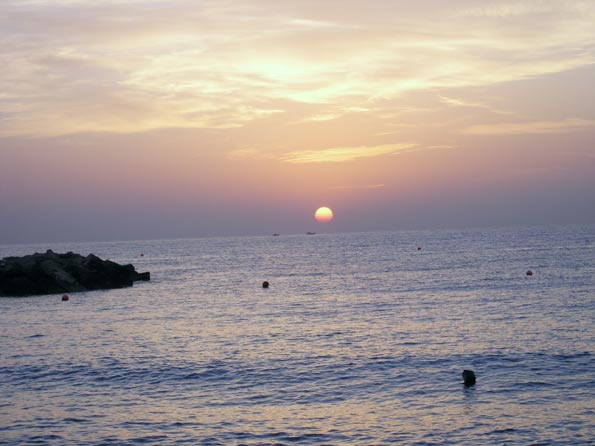
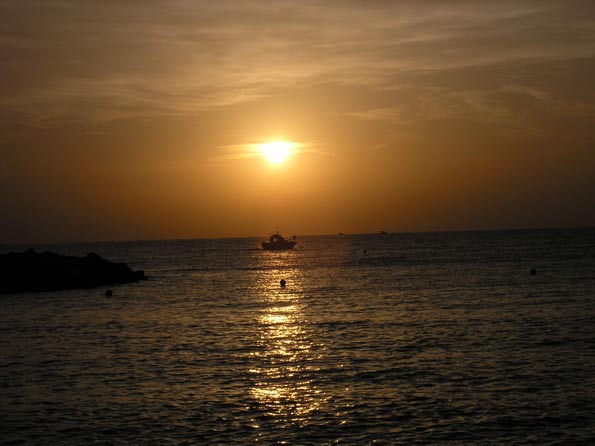
It was quite a dizzying tour through Croatia and Slovenia along the coastal and mountain route. From Dubrovnik in the south to Zagreb in the north past a landscape of astonishing beauty: islands on the Adriatic, castles and fortresses on mountaintops, olive and orange groves, picturesque harbors, old towns, jade lakes, autumnal forests. Seeing the land, It is hard to imagine that not too far away there was war and “ethnic-cleansing” within the last two decades. How do people live with a history of atrocities and ancient hatred? The travel guides, English-speaking women, did not shy away from narrating stories of destruction, vengeance, and inhumanity in certain areas.
Often I wandered away from the tour. I took photos of buildings, churches, canals, doors and gates, castles. Monuments that endured. Sadly, I had no time to keep a diary. I often stood still mesmerized by the stunning scenery. Sometimes I stared at bullet holes on walls. As a child during the war in the Philippines in the early and mid- 40s I remember the evacuation to the mountains, the dug-outs and the malnutrition. (See poem “Memory” in the Poetry Section and the essay “Reflections on the diaspora, burung babi, Malayan fish head curry, a favorite uncle and a trip to the mountains” in the Writing Section.) Certain images kept sneaking into the journey and I asked myself: What did the people remember of the war? With such a fragile peace, will there be another descent into madness?
I have decided not to write captions to the photos. But I should note that I encountered one of my favorite composers — Gustav Mahler — in Ljubljana, capital of Slovenia. He was the resident artist for 6 months sometime in 1881. I took a photo of his statue and his bust and the Academia Philharmonicorum building where he was the director. Among other things, I owe Mahler my deep admiration for Du-Fu and Li-Po. Their poetry was used by him in his composition “Das Lied von der Erde” (“Songs of the Earth”). Valentina, the tour guide mentioned that his music was played at the square during the 20th anniversary of Slovenia’s independence. She did not specify which one but I imagine it was Symphony #2 (The Resurrection).
Despite the horror of war, and the plague of hate and cruelty, the landscape restores faith. Beauty and truth bloom in the landscape, in works of art and in the human heart.
The birthday banquet of GM Gin Soon Chu at the Imperial Garden in Boston’s Chinatown:
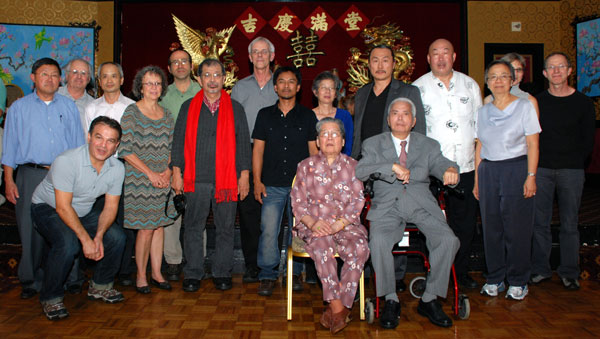
GM Chu Gin Soon with his senior students at the September 22 celebration of his birthday. I recognize Linda, Peter, Mary Beth, Phil, Arthur, Jean, Michael, Arthur and a few other faces. Just behind the celebrant is Kim shifu, his second disciple. That’s me with a red scarf. There were at least 200 in attendance, mostly the master’s students from the last 40 years.
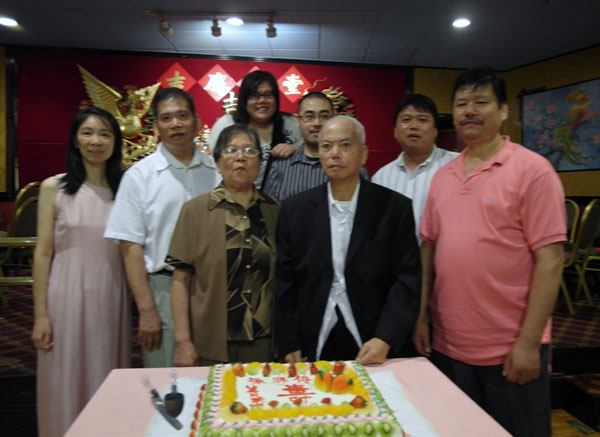
GM Chu Gin Soon with his family at his recent birthday banquet in the Imperial Garden Restaurant in Boston’s Chinatown. The Chu clan was also present.
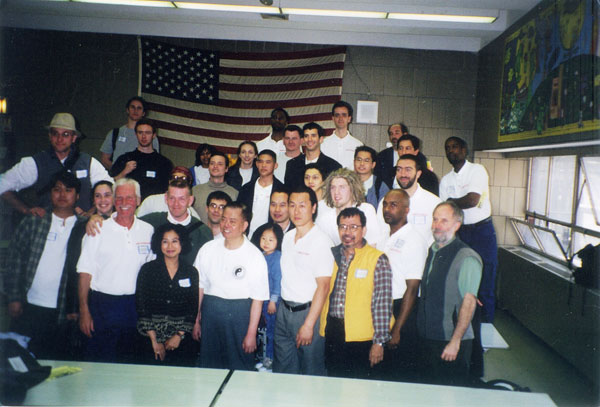
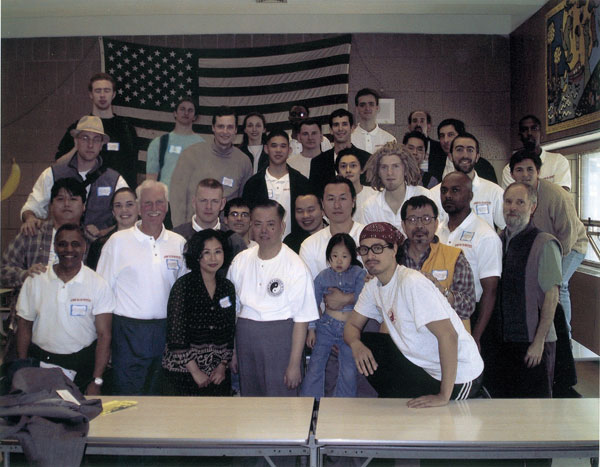
GM Chu with Kim shifu and other students during a demonstration of martial arts in NYC. Undated.
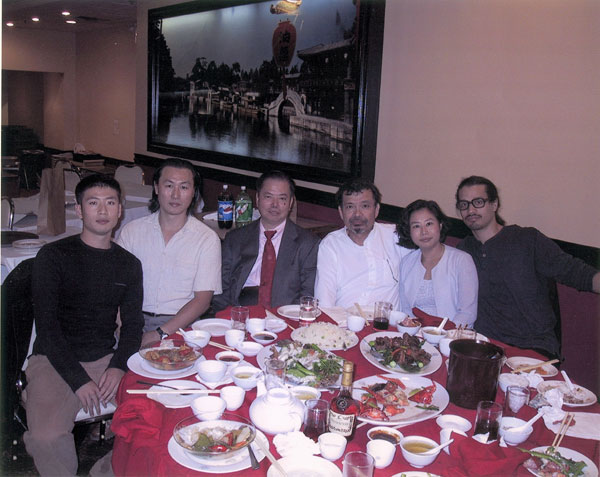
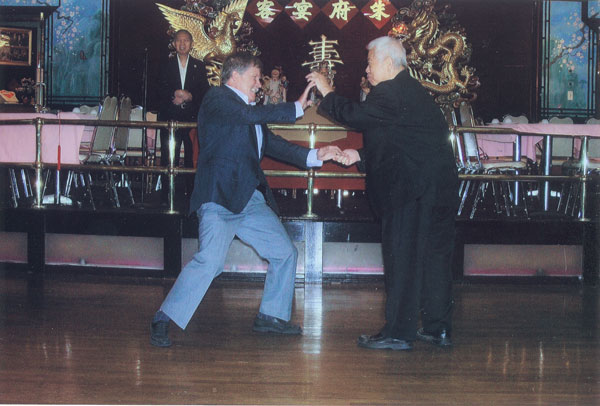
I cannot remember when these photos were taken exactly. But it was at another September banquet, which was held on GM Chu’s birthday. Chu shigong had time to pose for photos and to Push.
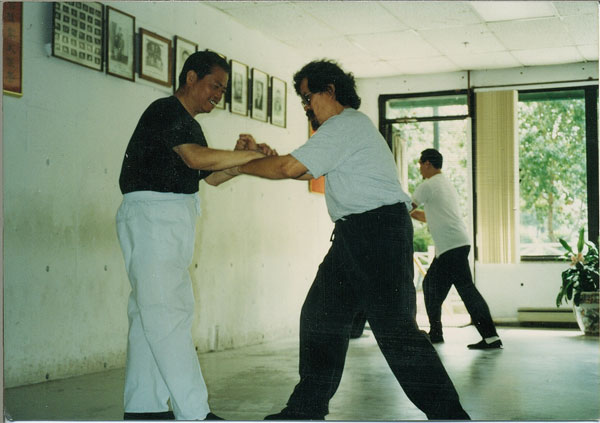
GM Chu Gin Soon doing Push Hands with me in 1992. The school was located on the first floor of the Turnpike Tower Apartments at the time until it moved to its present location on Harrison Street corner of Beach. When the school, the oldest in Massachusetts, opened in 1969 it was located in the building across the street. The present address is on the second floor and is more spacious. if you are in Boston, visit the school and see the students in training.

With Traditional Yang Family Tai chi chuan Grandmaster Gin Soon Chu and his wife at the birthday banquet in the Imperial Garden Restaurant in Boston’s Chinatown last September 22, 2012. I have studied with GM Chu since 1990. See essay “Looking for Yang Cheng-Fu” in the Writings section of this website. He has the most comprehensive knowledge of the Yang Family system. His mastery of the 34 fajing techniques, the curriculum, and the process of teaching is beyond words.

Celebrating his birthday with a traditional Chinese banquet and a cake, Grandmaster Chu poses with his wife. The party was attended by at least 200 of his admirers, students, family and relatives. There were countless toasts, photo ops, Tai chi performances and speeches. It was a spontaneous and indescribable outpouring of love, respect and admiration for the Grandmaster.
The Carlos Palanca Memorial Literary Awards Night :
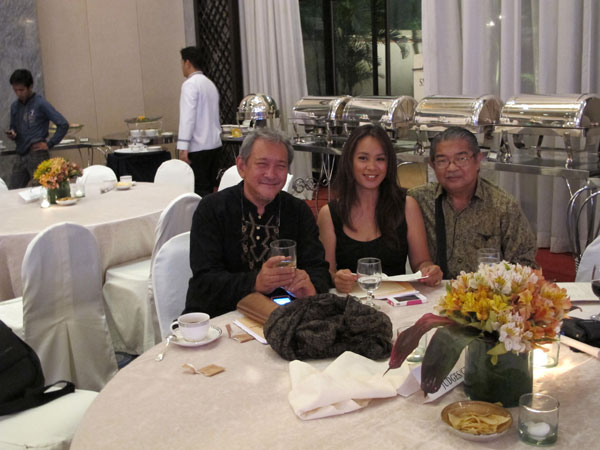
Alfred “Krip” Yuson and Ed Maranan are two of the few Hall of Fame recipients in the Carlos Palanca Memorial Awards for Literature, the most prestigious literary competition in the Philippines. A Hall of Fame award means that the winner should have received 5 first prizes in the main literary categories — poetry, short story, play, essay. Krip, Ed and I have appeared in different poetry anthologies. My poetry has been included in 3 of the anthologies edited by Krip — “Father Poems,” “Eros Pinoy: Contemporary Erotic Poetry and Art in the Philippines,” and “Love Gathers All: Anthology of Love Poems” (published in both Singapore and the Philippines).
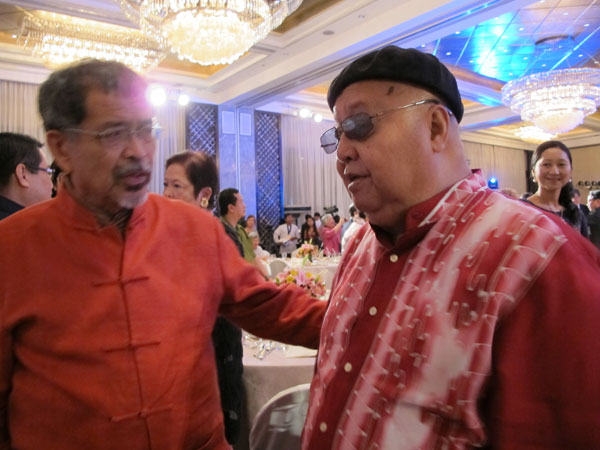
That’s F. Sionil Jose, National Artist for Literature. He has written many books (novels and short stories), the most famous of which are the Rosales novels. I have known Frankie since the late 1950s. I first met him at student editors’ conferences and then at his bookstore “Solidaridad” in Ermita, Manila.
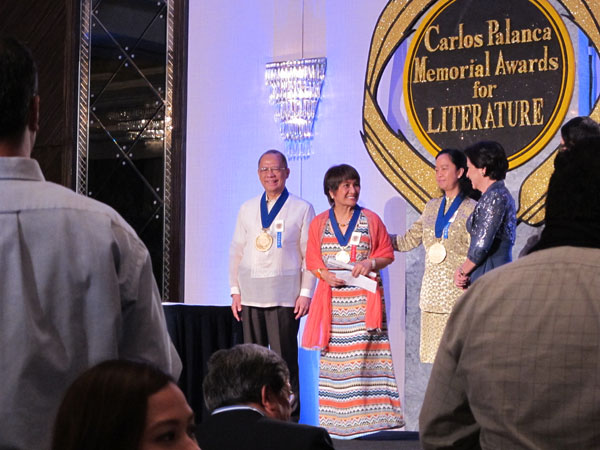
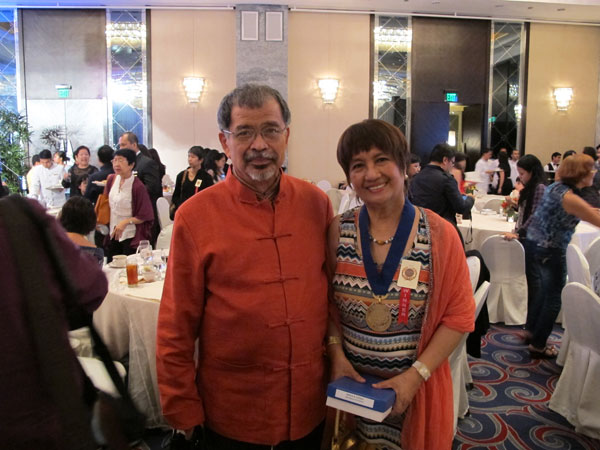
Grace D. Chong, winner of the first prize in the children’s short story for her work “The White Shoes.” I had not seen Grace for at least 45 years. We were both students in the University of the Philippines in the early 1960s writing for the campus newspaper. I was surprised when she recognized and called me from a distance.
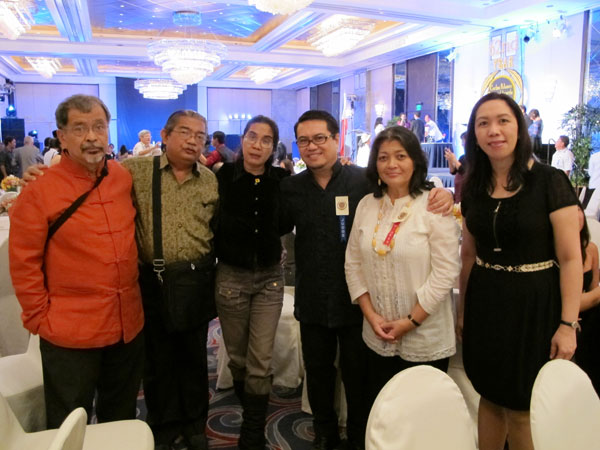
Ed Maranan and Rene with a group of writers at the Carlos Palanca Memorial Awards for Literature. I was Ed’s guest to the event held at the Peninsula Hotel. I was also his guest last year. See the photos from that night in this website.